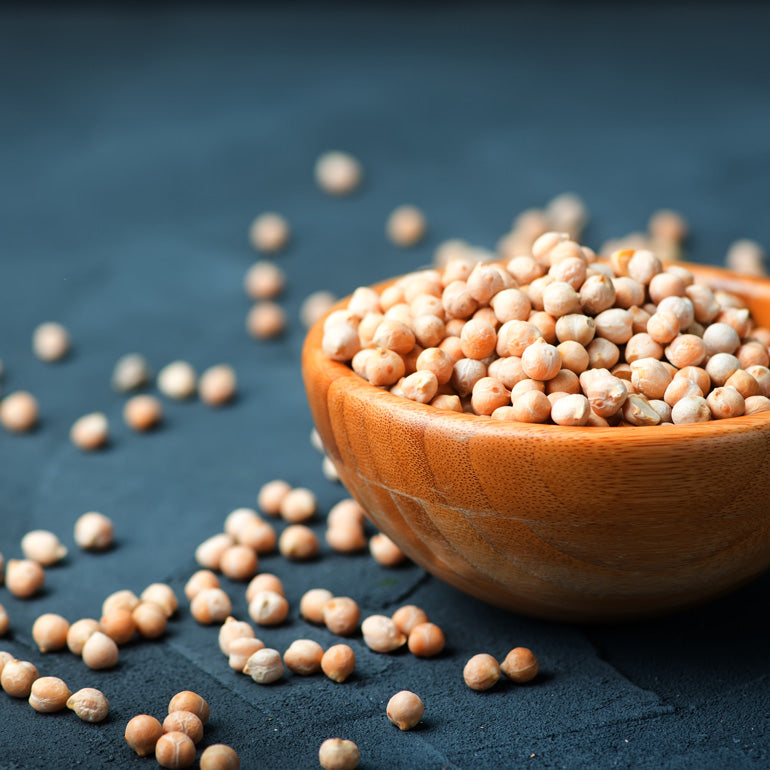History and Origin of Chickpeas and Hommus
Did you know the word Hommus literally translates to chickpeas in Arabic? Chickpeas are the main ingredient in the SSS Foods Hommus range, and we source our chickpeas from Victoria, Australia.
Chickpeas are from the pulse family and are a leguminous crop along with lentils and beans. They are picked once the seed pods have dried. Chickpeas have been grown as a crop for millennia.
So, let’s start our look into Hommus with a quick lesson on how do chickpeas grow? The cultivation of chickpeas can be dated back at least 10,000 years to ancient Turkey – having been grown in the Middle East and Mediterranean for eons.1 Chickpeas are currently the world’s third most grown crop and while we know they are a super food being high in protein and other macronutrients they also have the natural ability to "fix" atmospheric nitrogen and help soil fertility meaning they work well in crop rotation. With droughts becoming a more regular occurrence they also are a crop that requires little water as they have such a deep root base and being able to be eaten dried means they keep for long amounts of time once harvested.2 The pretty flowers turn into pods, which once dried the whole stalk is harvested, and the peas pods are stripped from the stalk and inside each little husk is the dried pea.

The humble chickpea even before becoming delicious hommus is truly super and will become ever more prevalent as a protein source with low energy requirements as the world looks to more environmentally and sustainable ways to eat.
How did Hommus come about then? The origins have been lost to antiquity, but we know it is of Middle Eastern origin. As chickpeas are harvested dried, the peas themselves need to be soaked, cooked or ground to make them edible. It would seem logical that at some point someone overcooked their chickpeas and they became mush, or maybe it was early baby food that flavourings like salt and lemon were added to make them more palatable. Arabic cookbooks from the Middle ages contain recipes for chickpea puree’s, with the addition of tahini (sesame paste) appearing later in Syria. 3 The tahini adds a depth of flavour and a slick mouth feel from the oil within sesame seeds.

Hommus can be made chunky or smooth, and with varying levels of tahini and lemon juice or acid added to people’s tastes. Each region of the middle east has its own variations. SSS Foods Hommus is all natural and sticks to a traditional home-style recipe with chickpeas and tahini being at the forefront, and no additional oil being added than that present in the tahini. Additions include salt, lemon juice, garlic and herbs and consistency come from the quality of the chickpeas and water.
Our fantastic spiced hommus contains cumin, chilli and coriander to add an additional savouriness and hint of spice.






Tradologie
Very Informative Article!